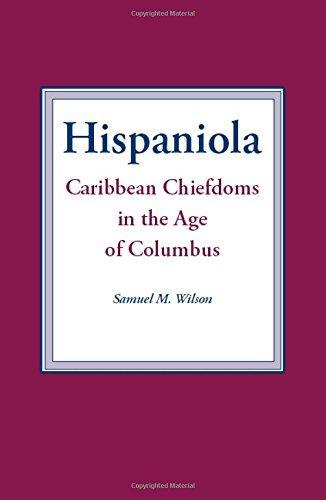Paperback, 184 pages
English language
Published Oct. 30, 1990 by The University of Alabama Press.

Paperback, 184 pages
English language
Published Oct. 30, 1990 by The University of Alabama Press.
In 1492 the island of Hispaniola was inhabited by the Taíno, an Indian group whose ancestors had moved into the Caribbean archipelago from lowland South America more than 1,500 years before. They were organized politically into large cacicazgos, or chiefdoms, comprising 70 or more villages under the authority of a paramount cacique , or chief. From the first voyage on, Columbus made Hispaniola his primary base for operations in the New World. Over the subsequent decades, disease, warfare, famine, and enslavement brought about the destruction of the Taíno chiefdoms and almost completely annihilated the aboriginal population of the island.
This book examines the early years of the contact period in the Caribbean and in narrative form reconstructs the social and political organization of the Taíno. Wilson describes in detail the interactions between the Taíno and the Spaniards, with special attention paid to the structure and functioning of the Taíno chiefdoms. …
In 1492 the island of Hispaniola was inhabited by the Taíno, an Indian group whose ancestors had moved into the Caribbean archipelago from lowland South America more than 1,500 years before. They were organized politically into large cacicazgos, or chiefdoms, comprising 70 or more villages under the authority of a paramount cacique , or chief. From the first voyage on, Columbus made Hispaniola his primary base for operations in the New World. Over the subsequent decades, disease, warfare, famine, and enslavement brought about the destruction of the Taíno chiefdoms and almost completely annihilated the aboriginal population of the island.
This book examines the early years of the contact period in the Caribbean and in narrative form reconstructs the social and political organization of the Taíno. Wilson describes in detail the interactions between the Taíno and the Spaniards, with special attention paid to the structure and functioning of the Taíno chiefdoms. By providing additional information from archaeology and recent ethnography, he builds a rich context within which to understand the Taíno and their responses to the Europeans.
The Taíno are especially important in a New World context because they represent a society undergoing rapid sociopolitical change and becoming more complex through time. The early contact period on Hispaniola gives us a rich ethnohistorical glimpse of the political processes of a complex New World society before and during its destruction brought about by the arrival of the Europeans.